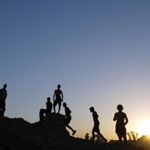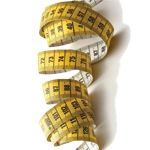 As a country we’re getting fatter, and it’s not doing our health any favours.
As a country we’re getting fatter, and it’s not doing our health any favours.
All over the world, more and more people are becoming overweight or obese. The World Health Organisation has called it a global epidemic; here in Australia, obesity rates have more than doubled over the past 20 years ” we are now one of the fattest nations on earth.
Who is obese?
While obesity occurs in all population groups in Australia ” kids, adults, Indigenous and non-Indigenous people ” Aboriginal and Torres Strait Islander people are more at risk of becoming overweight or obese.
The 2004-2005 National Aboriginal and Torres Strait Islander Health Survey found that obesity has become an increasing problem in the Indigenous population
The survey found that 28 per cent of Indigenous people were overweight and 29 per cent were obese. This means around six out of 10 Aboriginal and Torres Strait Islander people are either overweight or obese.
Why are we getting fatter?
Before white settlers arrived, Aboriginal people led pretty physically active lives. But, with the introduction of Western diets and conveniences, there is no longer any need to go out hunting and gathering. Being inactive is one of the main causes of weight gain.
Our traditional diet was also very healthy ” high in protein and complex carbohydrates and low in sugar. But these days, the diets of many Indigenous people are often high in refined carbohydrates and saturated fats.
How does obesity affect the body?
Being obese doesn’t just look awful, it’s also extremely bad for your health. Being overweight or obese increases your risk of a whole variety of serious health problems, including:
“¢ heart disease
“¢ stroke
“¢ some cancers
“¢ kidney and gall-bladder disease
“¢ lung problems
“¢ type 2 diabetes
An obese person is 10 times more likely to develop type 2 diabetes than a person of normal, healthy weight.
Diabetes ” a growing concern
Aboriginal and Torres Strait Islander Australians have the fourth highest rate of type 2 diabetes in the world. It’s believed that anywhere between 10 to 30 per cent of Aboriginal and Torres Strait Islander people have type 2 diabetes ” two to four times the rate for non-Indigenous Australians.
Body fat stored around the abdomen, rather than the hips and thighs, is a significant risk factor, and around 75 per cent of Aboriginal women carry too much body fat around their abdomen. Type 2 diabetes is more common in Aboriginal women than Aboriginal men.
Some of the complications of unmanaged diabetes include:
“¢ kidney failure
“¢ retinopathy ” an eye problem which can cause blindness
“¢ neuropathy ” a condition which can cause ulcers on the legs and feet and can lead to amputation
“¢ heart disease
Your doctor can do a simple blood test to see if you have diabetes or are at risk of getting diabetes.
All in the Balance
Got a problem with your weight? You can achieve a healthy body weight and maintain it, and you don’t have to starve yourself or deprive yourself of the things you love. The key is moderation.
Combined with moderate physical activity, a healthy, balance eating plan can get you to a healthy weight and have you feeling healthier than ever before.
A balanced eating plan includes:
“¢ eating plenty of vegetables, legumes (peas, beans, nuts) and fruits
“¢ eating plenty of cereals (breads, rice, pasta and noodles), preferably wholegrain
“¢ eating lean meat, fish, and poultry
“¢ eating moderate amounts of dairy foods (milk, cheese, yoghurt)
“¢ drinking plenty of water
“¢ limiting the amount of saturated fat you eat
“¢ eating low-fat foods whenever possible
“¢ eating foods that are low in salt
“¢ limiting your alcohol intake
“¢ eating only small amounts of sugary foods
Fore more information on weight loss and healthy eating, speak to your doctor or ask at your local Aboriginal Medical Service.






Comments are closed.